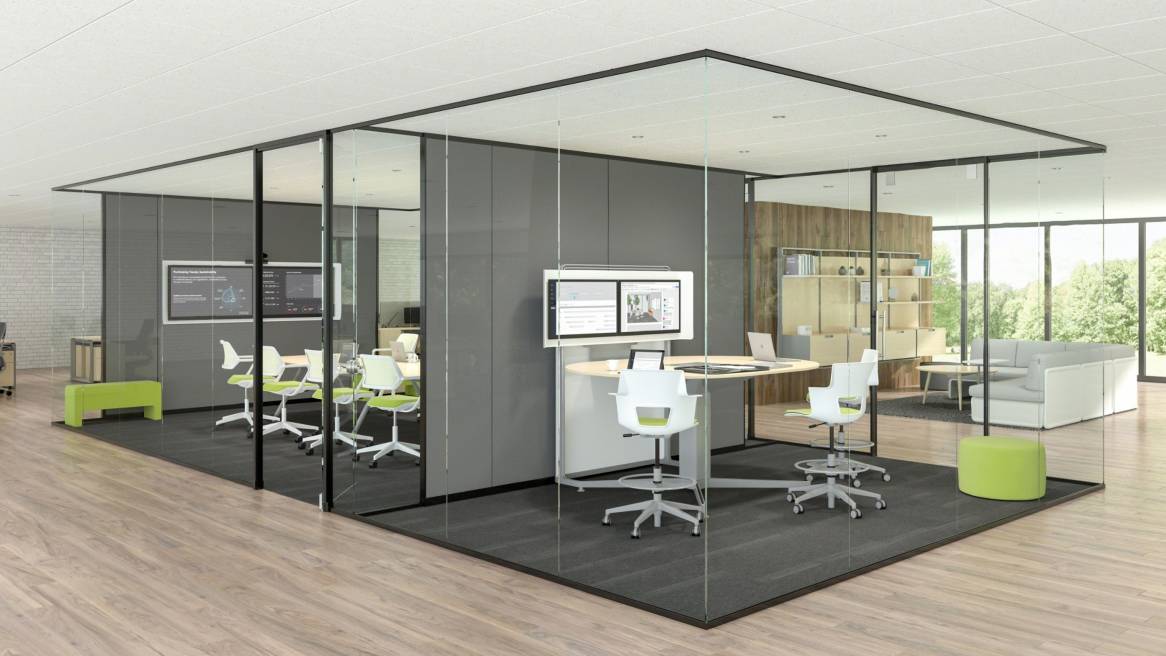It is clear that Coronavirus, and our reaction to it, has changed attitudes about offices, and therefore changed the way to find office space. And companies are making a wide range of decisions related to office space, some of which may work for your business, some of which may not. Recently, Twitter CEO Jack Dorsey claimed that Twitter will give employees the choice to work from home “permanently,” and Facebook CEO Mark Zuckerberg released a sweeping strategy to move Facebook offices from large central cities to smaller “hub cities” like Denver, Atlanta, Dallas, and others all across the world.

These Announcements Show that Working From Home is Working. This Changes Your Requirements to Find Office Space.
Pre-Coronavirus, 4% of US Office workers worked from home at least 50% of the time. It is clear that for executives who have fixed offices at the moment, believe that work from home will be a significant part of the future. And we agree. On a recent webinar we hosted with CRE Analytics company RefineRE:
Real estate executives who control $20 billion of annual rent spend predicted that their workforce would be 20% work from home by December 2021.
Choosing Work From Home Now May Actually Not Be What It Seems.
Clearly, work from home is on the rise. But decisions like the ones above are not only about the viability of remote work, they are admission from the world’s largest companies that:
- Working from home is the most flexible office arrangement that exists. It gives companies time and costs very little.
- Companies haven’t solved the problem of making their employees feel safe.
- They have bigger fish to fry in figuring out how to run their businesses in today’s climate than office space
- They are not sure what the next move should be.

So, How Long Can Work from Home Be the Solution? And When Will You Need to Find Office Space?
Work from home does have costs, and those costs grow over time. In a recent interview with Brendan Wallace of Fifth Wall, Cushman & Wakefield CEO Brett White shared that many clients in Asia are reporting falling productivity from their work from home workforce after two months. Further, there are all of the standard arguments about the value of collaboration, our human need for connection, and more. Though some US companies are reporting productivity gains from work from home, is that a permanent phenomenon? And are the benefits equal for all employees, all companies?

The results from any change toward or away from Work From Home will be unique to your company. Moving forward involves business leaders making decisions – many of which they may not have made before:
- Who and how often should your staff work from home?
- What outcome is your business optimizing for with your office?
- What type of office space does your business need today?
- How much office space do you need today, and going forward?
- What role does your company want to play in making your office a healthy place to work?
There are five decisions companies can make to help find office space they have never made before. In today’s world, many companies are deciding not to decide. You are likely among them.
1. Decide Who and How Often Your Staff Should Work From Home.
Working from home has clearly been the right choice all over the world in the short term. And going forward, it will most certainly be a larger part of the working world. But how do leaders decide who and how often their staff should work from home? Do you ask them? Do you let them self select? Both have pros and cons. We would suggest the following framework.
According to multiple studies, the rise in modern work from home has largely coincided with the rise of work that can be done in a mostly asynchronous manner. Similar trends are also driving changes in online learning, e-commerce, and more. According to Owler Labs, asynchronous communication is defined as:
Asynchronous communication is any type of communication where one person provides information, and then there is a time lag before the recipients take in the information and offer their responses.
In the modern workplace, certain functions can be done more asynchronously than others, though this varies company to company. Here is Upsuite’s take on which roles are mostly asynchronous, which roles are balanced to include a mix of synchronous work (meetings, calls, etc) and asynchronous work, and which roles are primarily synchronous activities.
75%+asynchronous |
Balance |
75% +synchronous |
|
| Executive | X | ||
| Sales | X | ||
| Marketing | X | ||
| Management | X | ||
| Product / Project Management | X | ||
| Customer service | X | ||
| Technology / Development | X | ||
| Operations | X | ||
| Human Resources | X | ||
| Finance / Accounting | X |
With this type of analysis of your business, you may find that the best roles for working from home are on the left-most column of the table – roles like technology and finance. While the roles that might suffer long term from working from home are on the right side of the table. Executive, management, sales, and product/project management. Note that some technology and finance teams are very synchronous – and that there are examples of executives and managers that are working very well from home. Results may vary from company to company.
So, how many of your staff fit into the following functional groups? With only 4% of the US workforce as work from home 50% or more, there is an opportunity for significant growth in this segment. However, there is also an upper limit to how long positions that are synchronous and collaborative in nature can be effective in a work from home environment.
2. Decide What Outcome You are Optimizing For Before You Find Office Space.

The second decision to make when thinking about deciding to find office space is what objective you are trying to accomplish with it. In the past, when having an office was a given, leaders probably didn’t needed to think about what an optimal office outcome looked like. But now that not having an office is an option, companies can decide what kind of business outcome they are seeking. These could include:
- Cost savings
- Reduced commute time
- Improved culture
- Improved productivity
- Health and wellness
- Other
Practically speaking, none of these objectives are mutually exclusive. So ranking office and work from home options based on their fit with your most important objectives is the best strategy.
Upsuite has developed a number of tools to help you evaluate your options:
3. Decide What Type of Office Space You Need.

The third decision is another one that leaders may not have thought of before. After all, the stereotypical office is just an office, right? We explore the diversity of office types topic further in our blog, but in today’s balanced market that includes traditional offices, hub and spoke models, collaboration spaces, event spaces, and more, leaders can now consider:
- Private versus shared spaces
- Fixed or floating desk configurations
- Private versus open offices
- Event/collaboration gathering spaces
The best route is to configure your needed office based on the needs of the synchronous roles that will be coming in the office (executive, management, sales, and product/project management, and allows for the part-time office use of the staff in balanced roles who might be coming in a few days per week.
4. Decide How Much Office Space You Need.

The fourth decision is also a new one. Companies and their advisors for ages have used outdated definitions of square footage, such as the old “200 square feed per person” rule. Many brokers or landlords are incentivized to try to get your company to lease as much space as possible, for as long as possible, according to speaker, advisor, writer Antony Slumbers.
The truth is, deciding how much office space your business needs should be driven by the decisions you make above. Who is coming in, and how often? What roles? What is your objective for the office? If your objective is improved productivity, does that mean collaboration spaces, shared space, or private offices? If it is health and wellness during COVID – 19, does that mean ample space, wide hallways, and private access? Today’s size requirements should be built from the ground up, considering the staff, the outcome, and the functional type – not using some outdated formulaic solution.
5. Decide What Role You Want Your Company to Play in Making Your Office a Healthy Space.

Lastly, an entirely new decision to make, unique to our era. In the MIT Technology Review’s recent article: “The CEO’s guide to safely reopening the workplace,” authors Ajay Agrawal, Joshua Gans, Avi Goldfarb, and Mara Lederman argue that:
Perhaps the single biggest implication of reopening national economies is that responsibility and thus liability for dealing with the covid-19 pandemic will shift from the public to the private sector.
Leaders today will be faced with the decision about the role they want to play in making their office a healthy space for their staff, or how much they want to outsource this function to experts,. f you are managing your own office, you can take this on, you can partner with your current landlord, you can outsource this to a serviced office provider, or a special cleaning service. But either way, you should decide. Your employees will want to know.
As you consider bringing employees back, are you ready for the added responsibilities that operating an office in 2020 entails?
We hope that this post is helpful as you decide what to do next. If you have questions or want to talk, please schedule a call with us to discuss your options. We are here to help.




This Post Has 0 Comments